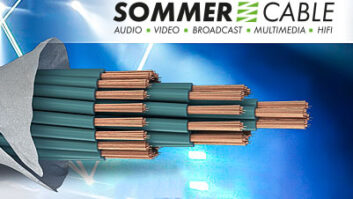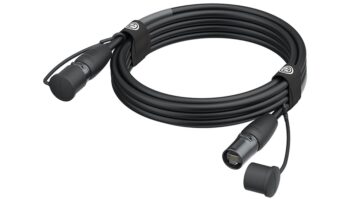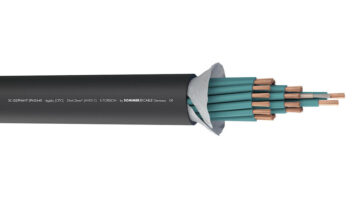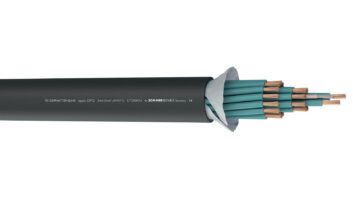Buena Park, CA – July 2009… Terry Howard of Technical Recording Services has worked with some of the greatest talent in the recording industry, including Ray Charles, Barbra Streisand, Stevie Wonder, Merle Haggard, Duran Duran, Slash, and Fleetwood Mac. With four Grammy® Awards alone for his work on Ray Charles’ critically acclaimed album Genius Loves Company, it comes as no surprise that Terry is quite particular about sound quality. When you operate at this level, you have access to the best gear available and Terry is adamant about the cables he uses to interconnect his equipment. That’s why he chooses Zaolla Silverline cable products for all his studio work.
Known affectionately as Mr. “Tâ€? in the music and sound industry, Howard spent almost 20 years working as Ray Charles’s engineer. Most recently, he completed new album projects with Howard Tate, the master soul
singer from the 1960s who recently returned to the stage following a long hiatus, as well as the legendary gospel and jazz songstress Etta James. Whether he’s working in his own studio or somewhere else, Howard has come to depend upon his Zaolla Silverline cables, which include scores of microphone and instrument cables, AES/EBU and RCA-terminated S/PDIF digital audio cables, plus BNC word clock cables.
When asked what makes Zaolla Silverline cables so appealing, Howard got straight to the point. “Sound quality comes first and foremost,� said Howard, “and, in this regard, the Zaolla Silverline cables exhibit a superior sound that I could clearly hear the first time I used them. These cables exhibit real sonic clarity without any high frequency smear. Singer, songwriter Ellis Hall initially introduced me to Zaolla Silverline and, right away, I noticed an audible improvement over the cables I had previously been using.�
Zaolla Silverline’s build quality is another noticeable characteristic that Howard appreciates. “My guitar and bass players consistently notice the quality of the connection,� says Howard. “The connections on these instrument cables are very solid. A lot of the quarter-inch jacks you encounter these days are poorly made, but not those on the Zaolla cables. The build quality of the cables is first rate and I particularly appreciate the fact that the outer sheath of the cable is very resistant to spills. People are forever spilling coffee and sodas while they work and these cables clean up extremely well. I’ve been using many of these cables for a good six years at this point, and they still look brand new. Equally important, the Zaolla cables lay well—without getting all kinked and difficult to manage.�
“In the early part of my career,� Howard continued, “I built studios for a living and this involved creating custom cable lengths. I originally learned how to make cables while working in the Air Force, where I worked in radar and electronic counter measures for B-52 bombers and KC-135 tankers—so I know what to look for. I was also a factory technician for Otari, Studer, and Amek. If you take a Zaolla cable apart, it becomes immediately apparent that it’s very well manufactured.�
With the proliferation of digital equipment in today’s recording studios, Howard finds it critically important to use the best possible digital cables for interconnecting all the various interfaces, converters, and microphone preamplifiers he uses. Here too, he finds much to like with his assortment of Zaolla Silverline AES/EBU, S/PDIF, and his word clock cables.
“Most any digital cable works well over short runs of, say, three feet,� explained Howard, “but the moment you go greater distances, things deteriorate in a hurry. That’s where my Zaolla cables excel. I find that I can run signals over much greater lengths and not experience dropouts or other anomalies that can easily occur with lesser quality cable.�
So what advice might a veteran like Mr. T offer to an aspiring producer when it comes to selecting the right cables and their impact on quality production? “If you’re really going to find the difference between cables,� says Howard, “you can’t listen to the salesman. You must listen to the cable itself and conduct an A-B comparison using the same signal. If you take the time to do this, you’ll benefit in two ways: (1) you’ll improve your ability to listen critically and (2) you’ll start listening for those fine details and learn to notice whether or not they’re present when using one cable as opposed to another. Ultimately, you become focused on achieving the best signal possible.�
Before re-directing his attention back to his current recording activities, Howard offered these closing thoughts, “When you’re looking for cables, you frequently have questions about their use. Zaolla Silverline’s customer and technical support services are first rate. Everyone I’ve spoken to has been very cordial and helpful—and that goes a long way toward making you feel like a valued customer. Since I started using Zaolla Silverline cables, I’ve been very happy with the sound quality I achieve. When you’re happy, that energy becomes contagious and it leads to a better session. If you feel good about your work, others will notice.�
About Zaolla Silverline Headquartered in Buena Park, CA, Zaolla Silverline is the leading innovator of cable technologies for the musical instrument and pro audio industries. From solid-silver conductors for digital audio and video to unique hybrid conductors for instruments and microphones, Zaolla Silverline tailors each design to its specific application. This attention to detail has made Zaolla Silverline the brand of choice for the hottest live acts and recording studios of the new millennium. For more information about Zaolla Silverline, please visit www.zaolla.com.
###
Photo info: Image of Terry Howard in his studio.







